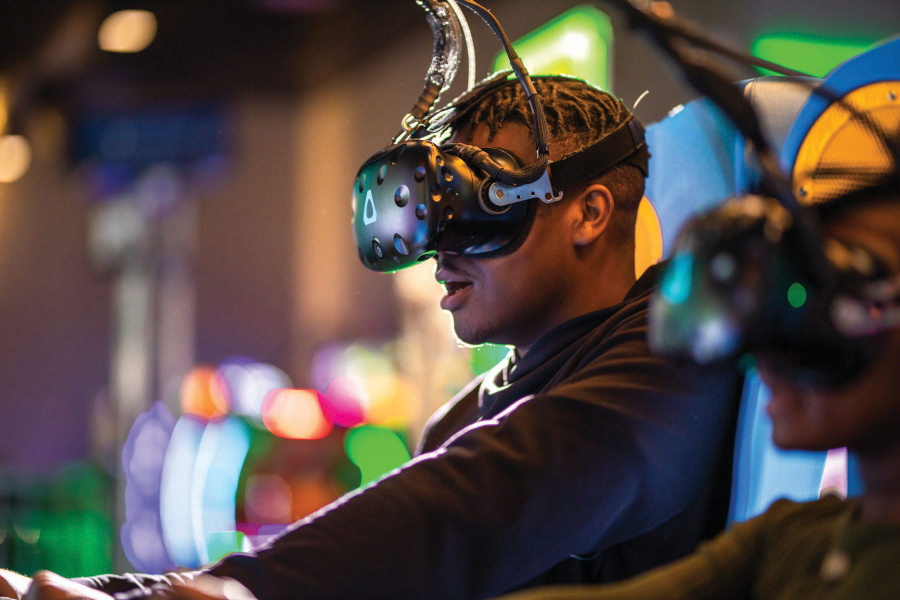With so much competition in the entertainment and leisure sphere, it is vital for attraction owners and operators to ruminate on strategies to set themselves apart.
Successful attraction owners say this type of thinking—an “entrepreneur mindset”—is necessary for a business to grow and thrive.
“The attraction industry is very dynamic—it’s not just a set-it-and-leave-it passive investment,” explains Kyle Allison, owner of Altitude 1291 in Oklahoma City. “It definitely requires someone to be active and engaging with the business so they can keep things relevant and exciting.”
Funworld offers five strategies to harness an entrepreneur mindset when looking to open an attraction or expand a current business.
1. Embrace Change
Yael Coifman, senior partner at leisure and entertainment consulting firm Leisure Development Partners LLP headquartered in London, says she has seen a lot of clients succeed when they have a more entrepreneurial attitude. This includes knowing how your market is changing and adjusting your offerings to address those shifts.
“If you can anticipate how different generations will want to experience things and offer them, that will keep people coming back and your visitors and potential markets engaged,” she explains.
Coifman says keeping an entrepreneurial mindset also means that you remain a lifelong learner. “Although you might have been successful for years running it the same way, market dynamics and desires change, and sometimes it’s important to get outside help from people who keep track of these elements, as you might not be able to running the operation day to day,” she continues.
2. Stand Apart
Ed Golebiowski, owner and operator of Fun-O-Rama Incorporated, which owns family entertainment center (FEC) Cheap Skate in Coon Rapids, Minnesota, and Zero Gravity Adventure Park in Mounds View, Minnesota, says he uses an entrepreneurial mindset by making the FECs’ guest experience unique.
“We stay on top of the latest technology in regard to attractions,” he details. “I look for attractions that [help] me stand apart and give people lasting memories.”
For example, Golebiowski installed a virtual reality (VR) system at Zero Gravity Adventure Park before anyone else in the area did. He also recently introduced an automated Skittles vending machine he discovered at IAAPA Expo 2022. “That has been amazing—people walk in, they see that, and they’re like, ‘Wow, we’ve never seen anything like that,’” he adds.
3. Be A Secret Shopper
Working in the attractions business for 15 years, Allison says he takes time to visit other attractions when traveling to seek out new ideas.
“It doesn’t have to be just an FEC—it could be an experiential restaurant or an aquarium or any type of hospitality venue,” he explains. “[If] I see something that I see as popular with that area [I ask] questions, [ask] the operators, [and find] out through IAAPA resources if I know the owner and contact them and see if they’ll share more about what they’re doing. It’s really getting to see real-world examples at other places to figure out what might work in the venue that we’re wanting to create.”
Golebiowski says he does the same. “We always say, hey, if this place has an arcade, let’s take a peek—let’s see what they’re doing, let’s look at their prize counter,” he continues. “So, just finding ways to see what other people are doing to catch an idea to find ways that we can better ourselves.”
4. Know Why
Whether expanding an attraction or building one from the ground up, Coifman says it’s important to interrogate your motives.
“What are the key goals they want to accomplish?” she asks. “Who do they want to attract? If there is capital investment involved, how will they measure success? Most importantly, don’t look internally, but externally—what are others doing, and are they successful? What lessons can be learned? Ensure that the expansion meets the market demands.”
Coifman also urges aspiring entrepreneurs to take the time for research. “An idea might be a great one but might not fit with the market you are thinking about,” she continues. “Make sure to really research and understand the concept and the market needs. It is worth investing in an outside consultant to do this so you have an impartial view and can properly measure potential before you invest. Remember, 5-10% of total investment is worth it instead of losing 100% on a good idea in a bad location.”
5. Actively Connect With Others
Both Golebiowski and Allison say that networking and connecting with others in the industry is an important part of the entrepreneurial mindset.
“Don’t be afraid to ask peers for advice or for input,” Golebiowski advises. “There’s a couple of Facebook groups that I belong to and there’s an exchange of information there all the time, of information and resources, and it’s very, very helpful. And networks like IAAPA [are] extremely valuable to network with your peers.”
Allison says never be afraid to pick up the phone and cold-call another operator or owner to ask their opinion on a piece of hardware.
“I think that’s what’s great about the power of networking and the power of IAAPA is that when I am looking for a new attraction or a new piece of equipment, and I see something that I like or piques my interest, then I can reach out to friends in the industry and say, ‘Hey, how is this performing and what has it done for you? Are you having mechanical issues? Are you producing the revenue that it needs to produce?’” Allison concludes.

